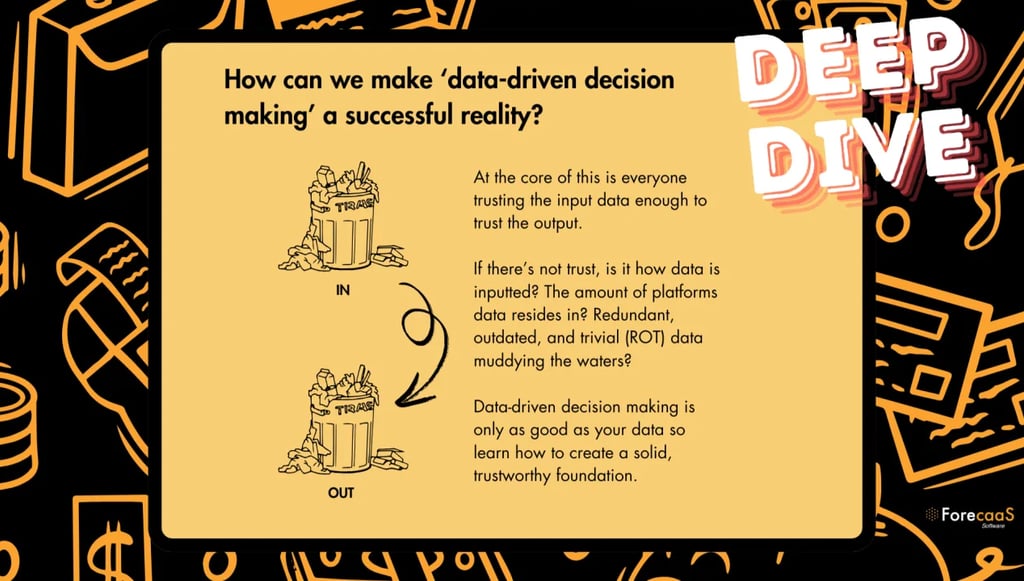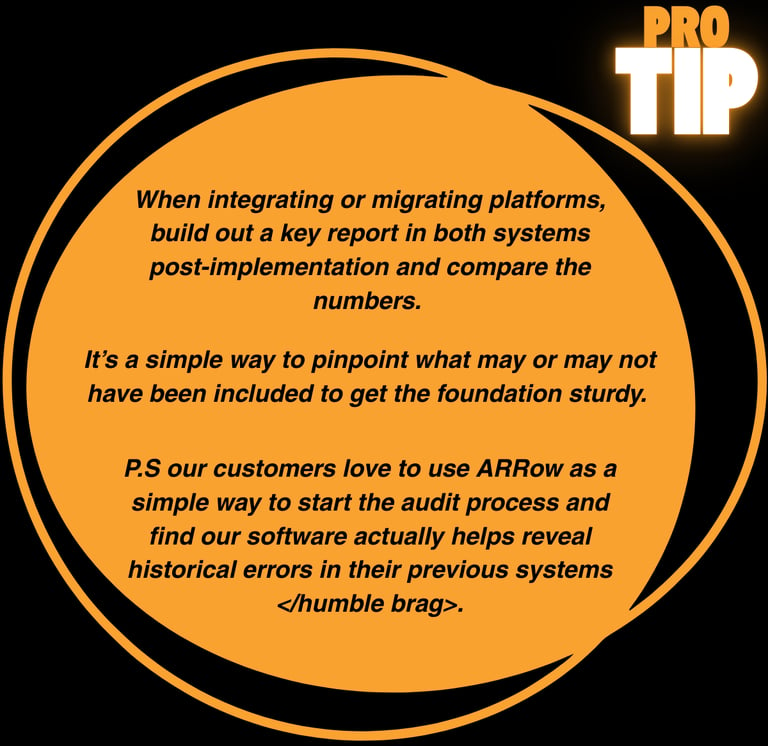The RevOps Guide to Becoming (or Supporting) a Data-Driven Organization
Gabriel Marechal
12/18/20244 min read


The RevOps Guide to Becoming (or Supporting) a Data-Driven Organization
Get your scuba gear ready because we are taking our second deep dive of the month based on my post earlier this month on RevOps Planning for 2025.
First up was building a tech stack and today we’re hitting on that much-loved SaaS-y buzzword: “data-driven”.
Like most terms that we eventually get sick of, “data-driven” came from a real phenomenon– the imperative shift away from individual opinions ruling decision making and looking at what the actual data is saying – whether it’s product usage, churn, CSAT scores – to determine corporate strategy.
SMBs in particular can fall into the trap of ignoring the data whether it’s due to a superstar salesperson whose feature requests dominate because their personality does or an out-of-touch exec leader who cannot put their ego aside.
We know the RevOps tenets are People, Process, and Platform but how can you influence each area to help guide your org towards being data-driven?
Read on for things to look out for, checks to put in place, and how to ensure everyone trusts the data enough to rely on it to make strategic moves quickly and with the right information in 2025.
Platforms
Becoming data driven all starts with the data that resides in your repositories – opportunity dates, renewal dates, product purchase history, invoice payment dates, primary contact info, and all the many points of data that are collected and used to help the organization function.
So when it comes to the data portion of data driven and the systems it resides in remember:
Data is only as helpful as it can be visualized.
Start with a simple structure for any reporting but make sure your data set can be adapted, modified, and enriched. You don’t always know what metrics may be asked for and if it’s too hard to slice and dice in different ways, it’ll be difficult to adjust it to changing needs (i.e looking at industry vs number of employee). We built ARRow Salesforce-native largely for the customization and flexibility it provides.
Always be “future proofing”.
When you are looking to building systems that span platforms, always have the end game in mind. You should understand exactly what you want the data to look like and when someone should have access to it then work your way backwards to the source of data to understand the best ways to get there.
Integrate at the natural junction points.
When it comes to connecting platforms, think of any integration as being at the natural junction point in a customer journey for a more seamless flow of info. An example of a natural junction point between two internal functions is Sales marking an opportunity as close-won.
This is a trigger for Finance to invoice that customer so it’s imperative that there is something in place – preferably automated or built into the platform – that can push the necessary details through and keep the journey on a smooth ride.
People and Process
I’ve mashed these two RevOps tenets together because when it comes to bolstering the values of being data-driven, the challenges are more often of the PEBCAK (Problem Exists Between Chair and Keyboard) variety.
Even with the best platform and shiniest reports, if there is no trust that the data is right, useful, or timely the descent into uninformed opinion and personality-based decision making can happen rapidly.
How can you help support the people and create the right processes to stay firmly on the ‘data driven’ train? Some things to keep in mind:
Focus on the why.
Data entry sucks. And the only thing worse than data entry is feeling like the data isn’t even being used or really looked at. So walk yourself through their process of obtaining information to really understand the amount of platforms they have to use, the amount of information they have to enter and whether it is still relevant, timely, or needed.
Why do we need that data, who is responsible to provide it and who is (really) looking at it?
More often than not, showing you care about their process and educating them on the importance of the data, who looks at it and showing what it’s used for can be all the necessary motivation needed. (A public dashboard regularly accessed by C-suite doesn’t hurt either!)
Automation for communication.
Having a process that depends on a Slack message, meeting update, or email to relay critical customer info is a losing game. Whether it’s a report, an automation, or triggered notification, data driven is not just about the right data but every function having access to the right data at the right time.
Customer hand-offs is typically a ripe area to gain some efficiency wins for RevOps teams. So nix the manual updates where you can with handover processes that contain automatic notifications based on system triggers. With information critical to function flowing automatically, the communication that DOES happen between functions can be more focused on what to do with the data, rather than where it is.
Stay sane with sanity checks.
Include in any data transmission process to do “sanity checks” where the input or output happens. These sanity check reports can identify what information could be missing or if the data has been properly captured. The “if it’s not in Salesforce, it doesn’t exist” mentality is already meh in theory but in practice only serves to hurt – commissions, metrics, and eyeballs when they got rolled really hard.
So help the inputters help your organization by keeping what they have to enter short and highly relevant. And use automated processes to bolster the data and keep an eye out for errors. Human intervention can only catch so much.
Best of luck on all your data-driven goals you have for 2025 and remember to incorporate it into the platform, processes, and people within your organization!
P.S If the data you’re looking to drive decision making is your SaaS metrics, shoot me a DM. We can definitely help you with that.


ForecaaS Software
The Recurring Revenue Specialists for Salesforce
Questions?
© 2025. All rights reserved.
